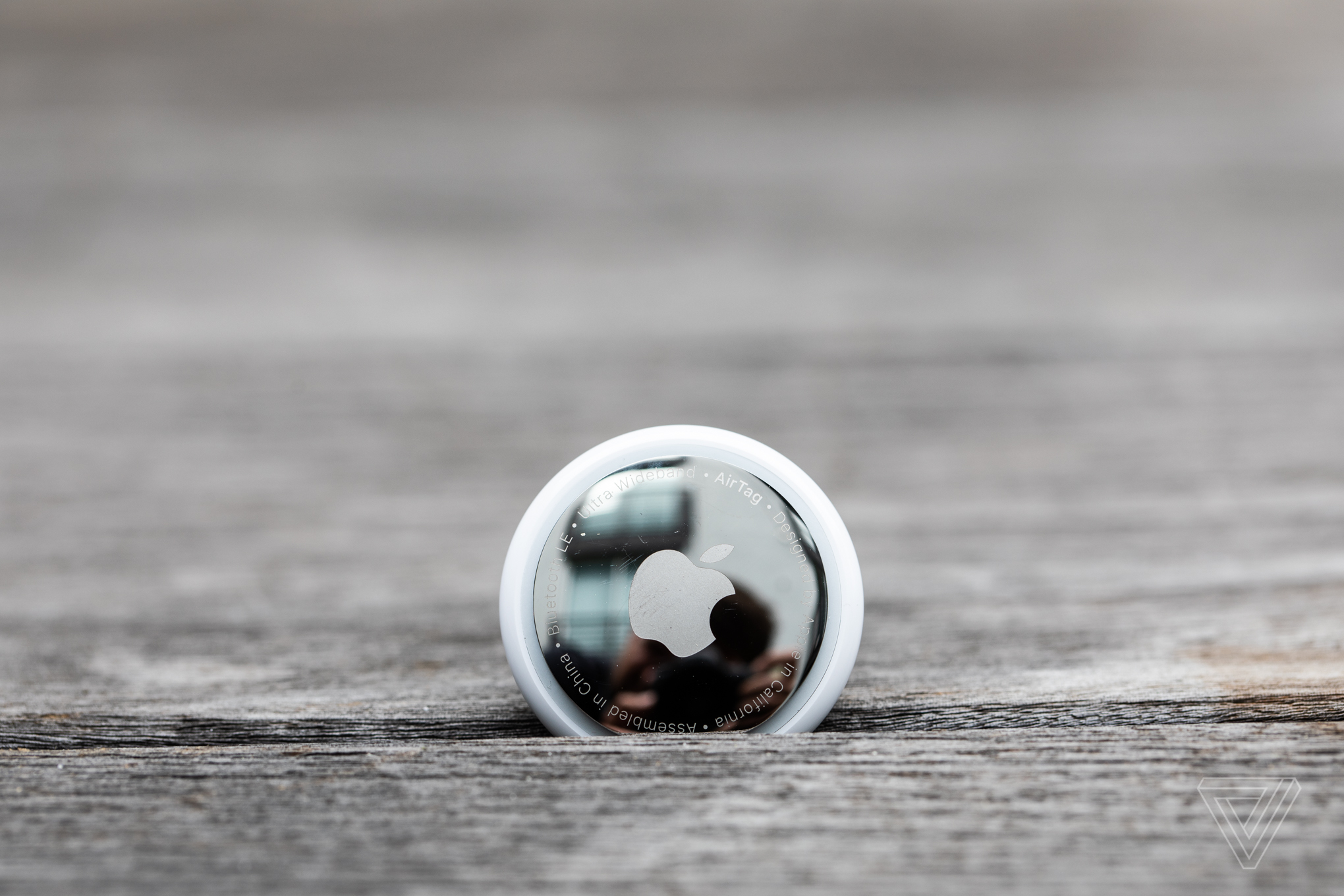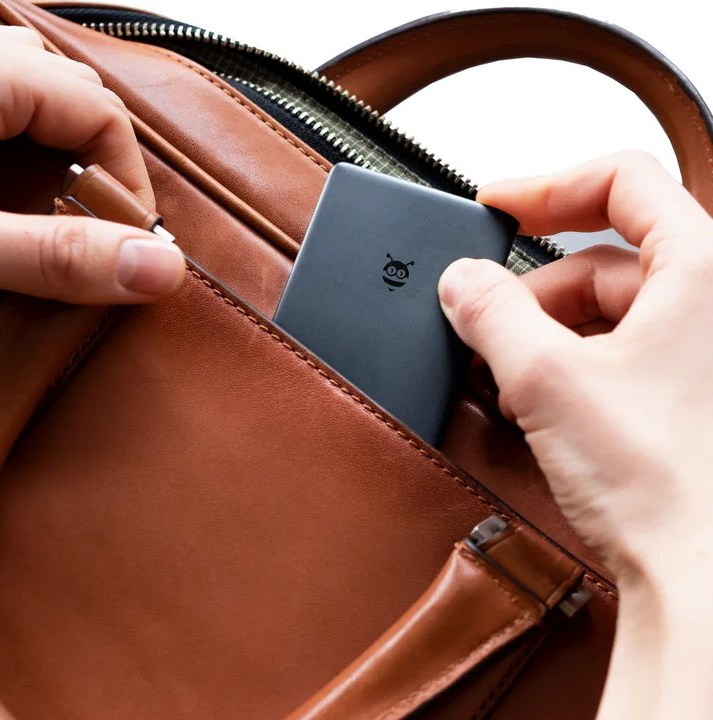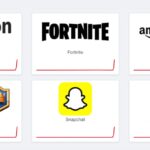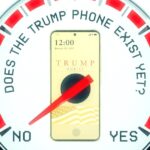Some people rarely lose things. Wallets are always exactly where they’re supposed to be, keys never go missing, and remotes never slip between the couch cushions. And then there’s the rest of us — the folks who can’t ever seem to find the thing that was right there a few seconds ago. For us, there are Bluetooth trackers.
Bluetooth trackers have been around for a long time, and they all generally work the same way. You stick the tracker onto an object, pair it with your phone, and then, when you lose said object, you can go into an app and ring the tracker. But these days, Bluetooth trackers can do a lot more. Some have ultra-wideband chips that enable precision tracking, so you can find exactly where in a room your item is. Increasingly, trackers also tap into large networks — like Apple’s and Google’s — making it easier to locate lost items outside the home. Many will notify you if they detect you’ve left the device behind or come with QR codes that link to your contact information so people can easily return lost devices.
What we’re looking for
Bluetooth trackers are meant to find lost items. To test that, we lose items — both organically (some of us really do misplace wallets and keys daily) and in more controlled test environments. For the latter, one example is testing how these trackers perform in office environments or in multi-story houses. Sometimes, we also enlist the help of family and friends to “hide” objects to evaluate precision finding features. We’ll also enlist help to simulate and evaluate unwanted tracking alerts. In our testing, we’re also looking to assess factors like Bluetooth and network (ie., Find My, Tile, etc.) range, battery life, and how loud chimes / alerts are.
Are you limited to Bluetooth range, or can you make use of wider networks like Apple’s Find My, Google’s Find Hub network, or Amazon Sidewalk? Is it hard to hear the tracker when you ring it?
A technology that lets you track small objects can be abused to track people without their consent. Tracker companies know this, and an increasing number now come with anti-stalking features. These features may never prevent abuse 100 percent of the time, but we investigate whether these features were crafted with care, how well the company educates users about them, and if the company is proactive about updating them according to feedback from experts.
Do you need to pay a subscription fee to get all available features? If so, is it worth the moolah?
Most Bluetooth trackers last at least a year, but not all of them allow you to replace the battery. That means you have to buy a whole new tracker when the battery dies. I prefer the ability to replace batteries whenever possible.
These features are incredibly handy but also have the potential for misuse. Take AirTags. When Apple launched the trackers, it hadn’t anticipated they’d be used to track people or stolen items — but that’s exactly what happened. It’s since beefed up its anti-stalking features, and companies like Tile have also followed suit. Apple and Google have launched a standard that enables unwanted tracking alerts across both Android and iOS devices — and major players like Tile, Samsung, and Chipolo are on board. But until this standard is up and running, it pays to be aware of each tracker’s current approach when you’re deciding the best option for you.
As a consummate Loser of Things, I’ve tested my fair share of Bluetooth trackers on wallets, keys, and luggage. Here’s what I’d recommend if you, too, have a hard time finding things.
The best tracker for iPhone users

$24
Apple’s AirTags can help you find your lost items with their ultra wideband technology. You’ll get the best compatibility with an iPhone, though Apple released an Android app that can detect an AirTag’s location and notify you if one seems to be following you.
When Apple launched AirTags in 2021, it really did shake up the category. That’s because AirTags are equipped with Apple’s Ultra Wideband (UWB) chip and tap into Apple’s vast Find My network. That’s a potent combo. And even though you can now get third-party accessories that work with the Find My network — including the Pebblebee trackers featured later in this guide — AirTags are still the best, thanks to UWB.
Basically, UWB enables precision tracking while Find My compatibility expands range far, far beyond Bluetooth’s limitations. With precision tracking, all you have to do is open the Find My app, tap “Find,” and you should see an arrow pointing you in the exact direction you need to go to find your item. Using the Find My network also means that so long as there’s an Apple device nearby, a lost AirTag can ping its location to Apple’s iCloud servers without notifying the owners of those other devices. And there are over a billion Apple products out there.
That accuracy is super convenient. My keys fell out of my pocket while running once, and I didn’t notice until my phone pinged me to say my keys were no longer with me. While I wasn’t able to use the precision tracking outdoors, I could see the last reported location in the Find My app. Twenty minutes had already passed, but I was still able to find my keys. I haven’t had that degree of success with any other item tracker.

However, this accuracy is a double-edged sword. In 2022, I ran a test to see whether I could track a friend and my spouse (with their consent) in real time. And I could, to a disturbing degree. While Apple’s unwanted tracking prevention measures worked, there were also inherent flaws. (You can read about our testing in full here.) However, Apple has since improved unwanted tracking alerts by shortening the time before you’re notified an unknown AirTag is in your vicinity, making chimes louder, and creating a separate app that lets Android users scan for unknown AirTags. Apple also now informs users during setup that unwanted tracking is a crime and that AirTags are “intended solely to track items that belong to you.”
Apple has also added more ways to share AirTag locations with trusted people. iOS 17 introduced AirTag sharing, which means shared items won’t trigger unwanted tracking alerts. As of iOS 18.2, you can also share the location of a lost AirTag with other people via a temporary link. So if an airline loses your luggage, you can send them a link to an interactive map showing your item’s last known location. (Apple is partnering with more than 15 airlines for this particular use case.)
The only thing I really don’t like about AirTags is that they aren’t truly $29. They’re $29, plus the cost of any accessory needed to attach them to the item you want to track. For example, you’ll need a holder to attach it to your keys or luggage. Thankfully, there’s a robust third-party accessory market, so you don’t have to pay Apple’s prices if you don’t want to. The fact that you can easily replace the battery with a regular CR2032 coin cell battery helps take the sting out, too. I’ve done it for two of my AirTags, and it’s much, much cheaper than buying two new ones.
Read our original AirTags review.
The best Bluetooth tracker for Android users
$25
The Tile Pro is the company’s loudest Bluetooth tracker and has the widest range at 400 feet. It also has a user-replaceable battery, unlike other Tiles.
More and more trackers now support both Google’s and Apple’s Find My networks, but Tile’s trackers — especially the $34.99 Tile Pro — are still our top recommendation for Android users or mixed iOS / Android households. Functionally, the platform-agnostic trackers can do just about anything an AirTag can. Like AirTags, Tile devices can tap into a larger network — in this case, the Tile Network and Amazon Sidewalk — to help you find your devices outside of your phone’s Bluetooth range. While this network isn’t as expansive as Apple’s or Google’s, Amazon Sidewalk’s coverage has improved significantly. When we tested Google’s Find Hub-compatible trackers — including the Chipolo Pop, Pebblebee Clip Universal, and the Moto Tag — we found that Tile still did better at tracking items outside the home.
Unfortunately, Tile still can’t do true real-time tracking, and it still doesn’t offer a tracker with UWB, so it lacks the AirTag’s precision tracking. The company announced one back in 2021, but we’re still waiting, partly because Apple is effectively blocking UWB compatibility for third parties in iOS and because Tile’s priorities shifted once it was acquired by Life360.
A note about Google’s Find Hub network
Initially, the network lagged behind Apple’s, but it’s starting to catch up. After several weeks of testing Find Hub-compatible trackers — specifically the Chipolo Pop, Pebblebee Clip Universal, and Moto Tag — in April, we found the network had improved significantly over the past year or so, especially in busy areas. Still, it’s clear Google prioritized privacy over precision.
That said, Life360’s acquisition has brought some meaningful upgrades. Pressing a Tile button three times now sends an SOS alert to emergency contacts through Life360. You can also add others to your Circle so they can view and ring nearby Tiles on a shared Life360 map. More recently, Tile trackers have become fully integrated into Life360, letting users manage their trackers directly within the Life360 app. This merger unlocked a few premium features for free, including push alerts for forgotten items and two-day location history.
Still, most of the good stuff — like 30-day location history, unlimited sharing with friends and family, free replacements for damaged Tiles, and up to $100 reimbursement for lost items — sits behind a $29.99/year subscription. Fortunately, Tile offers new members a one-year trial, and a single subscription covers all your devices. You also still get a lot of core functionality without paying: you can find your Tile via Bluetooth, view its last known location on a map, ring your phone from the Tile, and share access with one other person for free.
Tile also stands out for its versatility. While AirTags come in a single puck-like design, Tile offers four distinct form factors to suit different needs. The card-shaped Tile Slim ($29.99), for example, is the best option if you’re constantly losing your wallet. The square Tile Mate ($24.99) comes with a hole so you can stick it on a key ring or carabiner, and is probably the most versatile. The $24.99 Tile Sticker, meanwhile, is a small disc that comes with a sticky backing so you can put it on remotes, pet collars, and anything else you can stick it on.
The best Tile will depend on what you’re looking to track. My personal favorite, however, is the $34.99 Tile Pro, which is shaped like a key fob, is larger than the Mate, and can also be attached to other items. Of the four, it has the longest Bluetooth range at 500 feet and the loudest ring. It’s also the only one that has a replaceable one-year CR2032 battery.

Last but not least, Tile may actually be better than AirTags for tracking stolen items. The company rolled out an anti-theft feature in 2023, which renders Tile devices invisible to unwanted tracking detection in the event someone steals your item. Just know that to use it, Tile requires you to submit a government ID for verification, agree to Tile working with law enforcement without a subpoena, and consent to a $1 million fine if you misuse this feature. For anti-stalking measures, Tile also has a “Scan and Secure” feature, which allows you to use the Tile app to scan for unknown Tile devices in your vicinity. While better than nothing, it’s a flawed measure, as it requires the potential victim to proactively scan their surroundings.
The best AirTag and Tile alternative
$35
The Pebblebee Clip Universal supports Apple’s Find My and Google’s Find Hub networks, but also has a 500-foot Bluetooth range, LEDs that flash to help you locate it, and a rechargeable battery that lasts up to 12 months on a single charge.
If you’re looking for an AirTag or Tile alternative, the Pebblebee Clip Universal is an excellent choice. It’s one of a growing number of trackers that support both Apple’s Find My and Google’s Find Hub networks, a major improvement over its predecessor. This makes setup seamless for both iOS and Android users, while also enabling more accurate and reliable tracking than Pebblebee’s own network could provide.
The thing I like best about the Pebblebee Clip Universal is its rechargeable battery. A single charge lasts up to one year, up from six months — though you may get longer than that depending on your usage. It has a USB-C port, too, so you don’t have to sweat it if you lose the charger that comes with it. You love to see it.
The Pebblebee Clip Universal also has an LED strip at the bottom that lights up when you ring the tracker. That’s helped me spot my car keys more quickly when they’ve fallen under the car seat or other dark areas. The ringtone is also quite loud, and the 500-foot Bluetooth range is actually about 100 feet more than the Tile Pro, our pick for Android users. And while larger than an AirTag, the Pebblebee Clip Universal also comes with a snap-on key ring, so you don’t have to buy another accessory to attach it. It’s also IPX6-rated for water resistance.
Clip Universal owners can still use Pebblee’s app to set voice tags and ask Amazon Alexa or Google Assistant to help find their device. You can also use the “Find Phone” feature, which lets you double-tap to ring your phone.
Earlier this year, Pebblebee added a free “panic alarm” safety feature that’s similar to Tile’s SOS alert. Compatible with both Apple’s Find My and Google’s Find Hub network, the Alert feature lets you press the Clip’s button to activate a loud 97-decibel siren and flashing light, which you can disable via Silent Mode. No matter what, the Pebblebee app will still text your location to a trusted contact — or up to five people, with live location sharing if you pay for the $2.99 monthly Alert Live subscription.
That said, Clip Universal owners can’t use the Pebblebee app for tracking, and so only last-gen Clip owners can take advantage of the Pebblebee app’s extensive customizable geofencing features. That means, for instance, Clip Universal owners can no longer set up custom areas on a map and be notified whenever a device enters or leaves the area. They also can’t use the app to designate safe zones, which was useful to avoid unnecessary “left behind” notifications in familiar places like home or work. The latter can be done in Apple’s Find My app, though Google’s Find Hub doesn’t yet have an equivalent feature.
It’s worth noting that Pebblebee recently introduced the $34.99 Clip 5, the like-minded successor to the Clip Universal. The newer location tracker has been redesigned to function as a better panic alarm, with a louder buzzer, brighter LEDs, and improved durability. It’s also available in a string of new colors thanks to Pebblebee’s new Evercolor program, which introduces and retires two limited-edition colors every two weeks (the first colors in the lineup are green and purple). We’ll update this guide with our impressions once testing is complete.
The best AirTag alternatives for wallets


$28
The Pebblebee Card has a rechargeable battery that lasts for up to 18 months. It supports Apple’s Find My and Google’s Find Hub, but you can also use the Pebblebee app for voice tagging.
You could be like my spouse, who stuffs an AirTag in their bifold wallet and then makes a surprised Pikachu face every time it falls out. Or, you could opt for a Find My-compatible alternative specifically designed for wallets, like the $34.99 Pebblebee Card Universal. It plays nice with both Apple’s Find My and Google’s Find Hub networks, giving you cross-platform flexibility and the benefits of each — all with a super loud ringtone. It doesn’t come with precision tracking because it lacks UWB, but it makes up for it with those loud ringtones. As part of the Find My network, it also supports unwanted tracking alerts.
The Pebblebee Card Universal also stands out because of its rechargeable battery, which lasts up to 18 months on a single charge. Like the Pebblebee Clip Universal, it works with the Pebblebee app to support voice tagging and even has a button you can press to locate your phone. That being said, Pebble recently introduced a newer, slimmer version called the Card 5, which measures a mere 1.8mm thick and supports wireless charging. We’re currently testing the $34.99 tracker and will share our thoughts soon.
Other Bluetooth trackers to consider
Chipolo Pop and Chipolo Loop
The $29 Chipolo Pop offers a similar form factor to Apple’s AirTag in a lighter, more colorful package with a hole for a keychain or lanyard, a louder beep, and compatibility with both Apple’s Find My or Google’s Find Hub networks (though only one at a time). You can even use the Pop as a remote camera shutter and press the built-in button twice to find your lost phone. Unlike Chipolo’s other trackers, it boasts a wider 300-foot Bluetooth range, a more robust IP55 rating for water and dust resistance, and includes a user-replaceable battery that can last up to a year.
In my testing, tracking was accurate on both Apple’s and Google’s networks in most cases, Google’s struggled to track items outside my home as reliably as the Tile. And without UWB, the Pop couldn’t match the AirTag’s pinpoint precision. Still, the Chipolo app provides Android users with reliable out-of-range alerts and left-behind notifications — something Pebblebee and Moto Tag’s trackers lack —which, in my experience, triggered even faster than the AirTag and Tile.
If you’re willing to spend an extra $10, the $39 Chipolo Loop is very similar to the Chipolo Pop, with many of the same strengths and weaknesses. However, it charges via USB-C and includes a built-in silicone ring that’s easy to attach to keys, bags, and other items. You also get a more durable IP67 rating and an extra 100 feet of Bluetooth range — up to 400 feet total. Just note you’ll have to supply your own USB-C cable. ~ Sheena Vasani, Commerce Writer
If you’re a Samsung Galaxy phone user, the $29.99 Samsung SmartTag2 gets you UWB tracking and can tap into the Galaxy Find network, which operates similarly to Apple’s Find My network. It’s a great AirTag alternative but isn’t our overall pick for Android because it’s limited to Samsung Galaxy users. But for Samsung users, the latest SmartTag2 includes an improved Compass View, longer battery life, and a better app experience. It also has a newer, oblong design with a larger key ring than the original SmartTag.
Motorola’s $29.99 Moto Tag is the first tracker on Google’s Find My Device network to offer ultra wideband for locating lost items on phones equipped with a UWB chip, which is a feature Google only recently enabled via a firmware update. Like Apple’s AirTag, it can guide you directly to your missing item via directional cues in the Find My Device app. It worked well in my testing, helping me find the exact location of nearby items in my small apartment, though Apple’s AirTag was occasionally more precise when tracking objects farther away or through walls. The Moto Tag was also less effective than Tile’s trackers at locating items outside my home.
Still, if you want a tracker to find things around the house, the Moto Tag is a solid pick. It also fits most AirTag accessories, carries an IP67 rating for dust and water resistance, and uses a replaceable CR2032 battery that lasts up to a year. It can ring your misplaced phone, too, and doubles as a remote shutter for Motorola phones. ~ Sheena Vasani, Commerce Writer
Eufy Security SmartTrack Card E30
Eufy’s rechargeable $34.99 SmartTrack Card E30 is another good option for wallets, one that offers the same Find My network benefits as the aforementioned Pebblebee Card Universal and Pebblebee Card 5. On the back, there’s also a QR code — similar to the ones Tile uses — that helps good Samaritans return your item to you. Like the Pebblebee’s newest offerings, you can share it with multiple people if you set it up via the Eufy Security app. The bummer here is that it doesn’t work with Android and lacks UWB.
Chipolo Card Spot and Card Point
The $35 Chipolo Card Spot or $35 Card Point is also a good option for wallets if you want something a bit simpler, though it lacks the QR code, and its battery only lasts two years. If you do opt for Chipolo, double-check that the specific tracker you’re buying works on the network you want to use. For example, the Chipolo Card and Chipolo Card Spot can both be used with iPhones, but the Chipolo Card only works with the Chipolo app, while the Card Spot only works with Find My. The Chipolo Card Point is for Android users and works with Google’s Find Hub network. Read my full Chipolo Card Spot review.
- In addition to its new Loop tracker, Chipolo also introduced another rechargeable option: the Chipolo Card. Priced at $39, it works with both Apple’s Find My and Google’s Find My Device networks, offers a 400-foot Bluetooth range, and carries an IP67 rating. Unlike the Loop, though, it’s compatible with Qi wireless chargers and features a slim, credit card-like design that slips neatly into your wallet. ~ Sheena Vasani, Commerce Writer
- Ugreen released the $25.99 FineTrack Slim Smart G, which, at just 1.7mm thick, is slimmer than the 2.5mm Tile Slim. Ugreen claims that the tracker can last up to five years, but since it lacks both charging capabilities and a replaceable battery, you’ll need to replace the tracker entirely once it dies. It also works with Google’s Find My Device network and offers IP68 dust and waterproofing.
Update, December 17th: Adjusted prices / availability and added the Chipolo Loop to our list of secondary recommendations. Also removed the Eufy SmartTrack Card. Sheena Vasani also contributed to this guide.
Read the full article here















